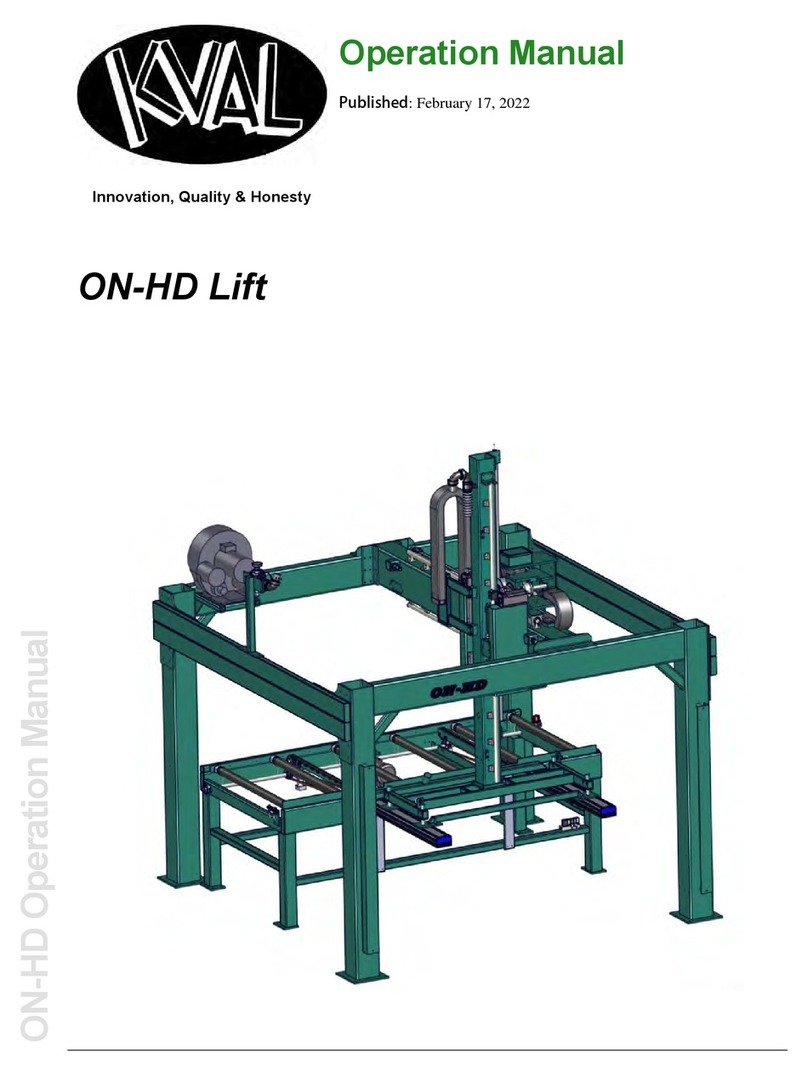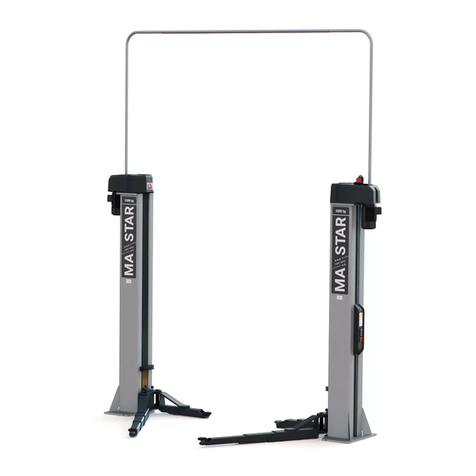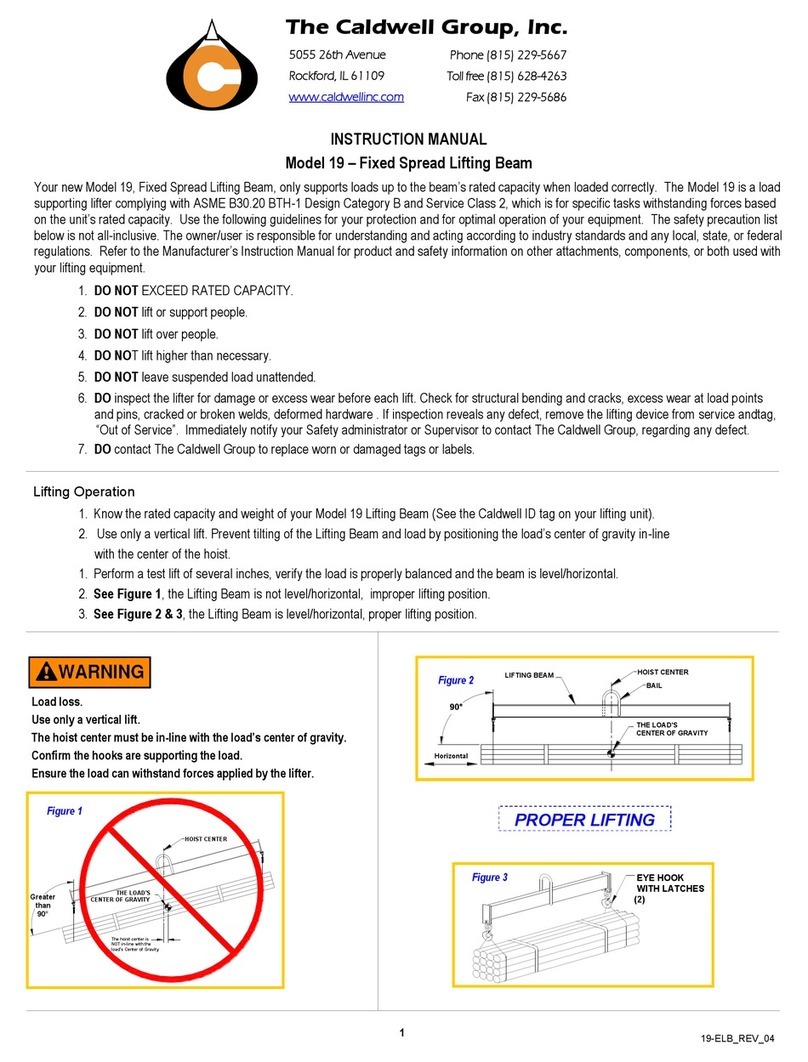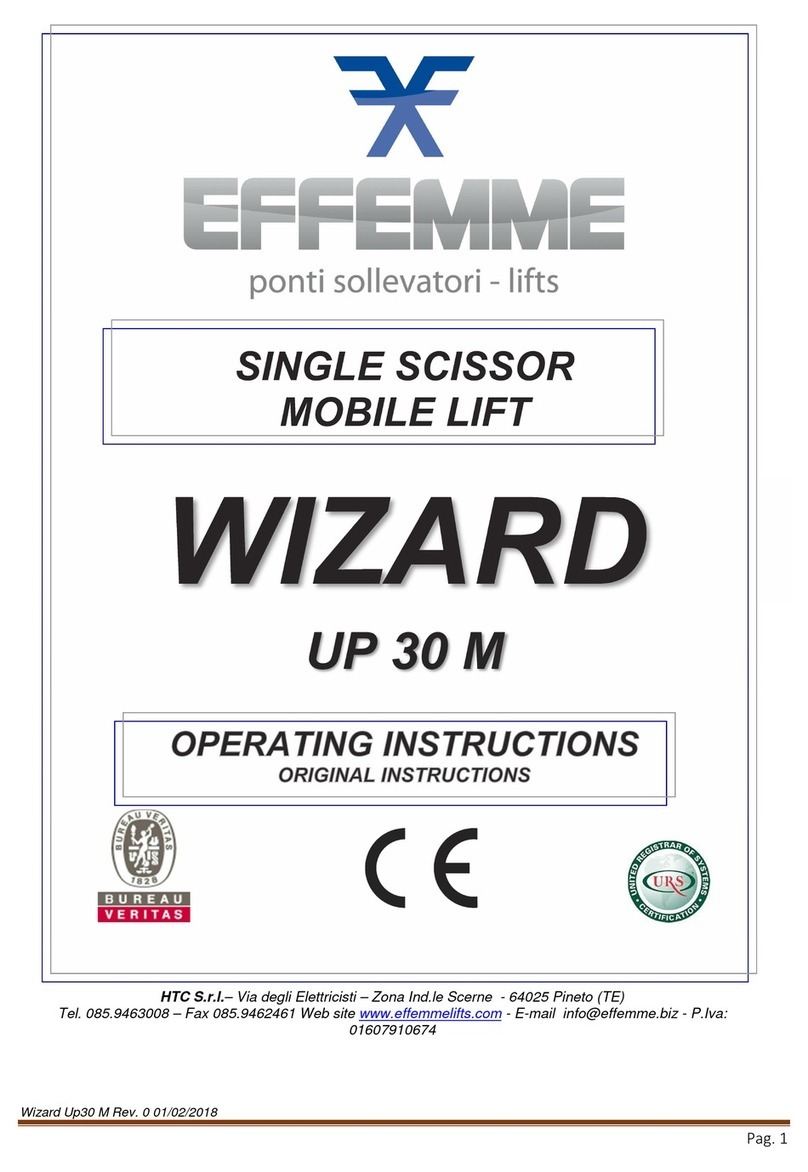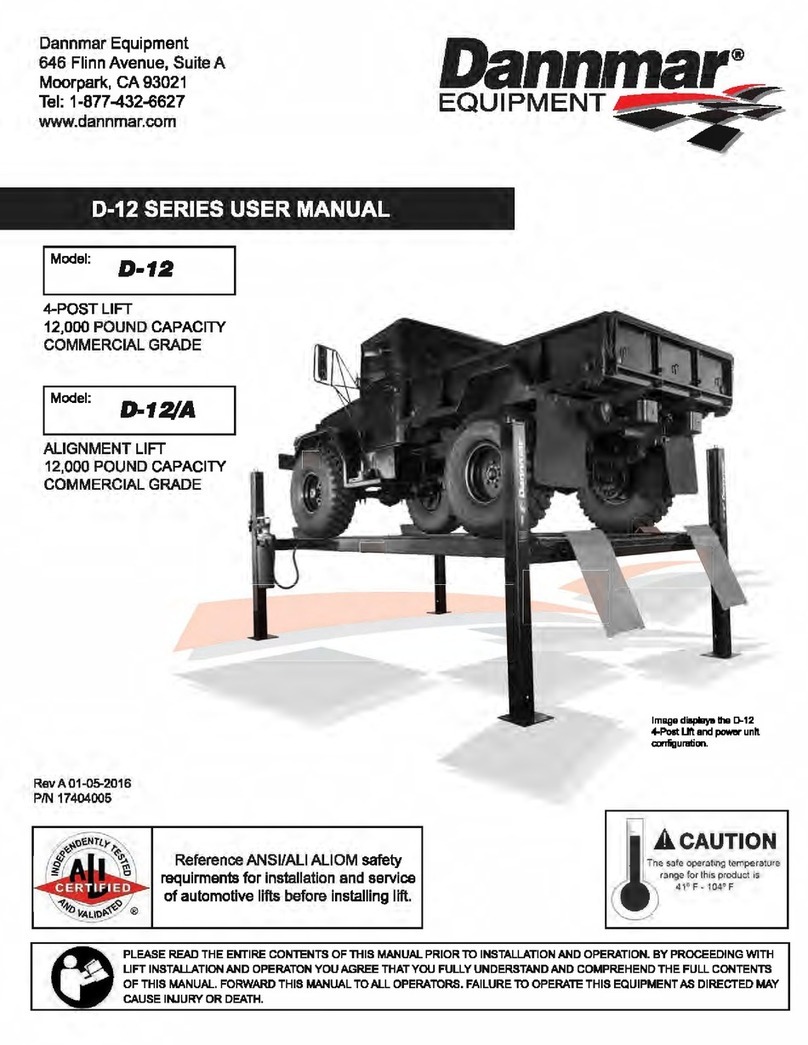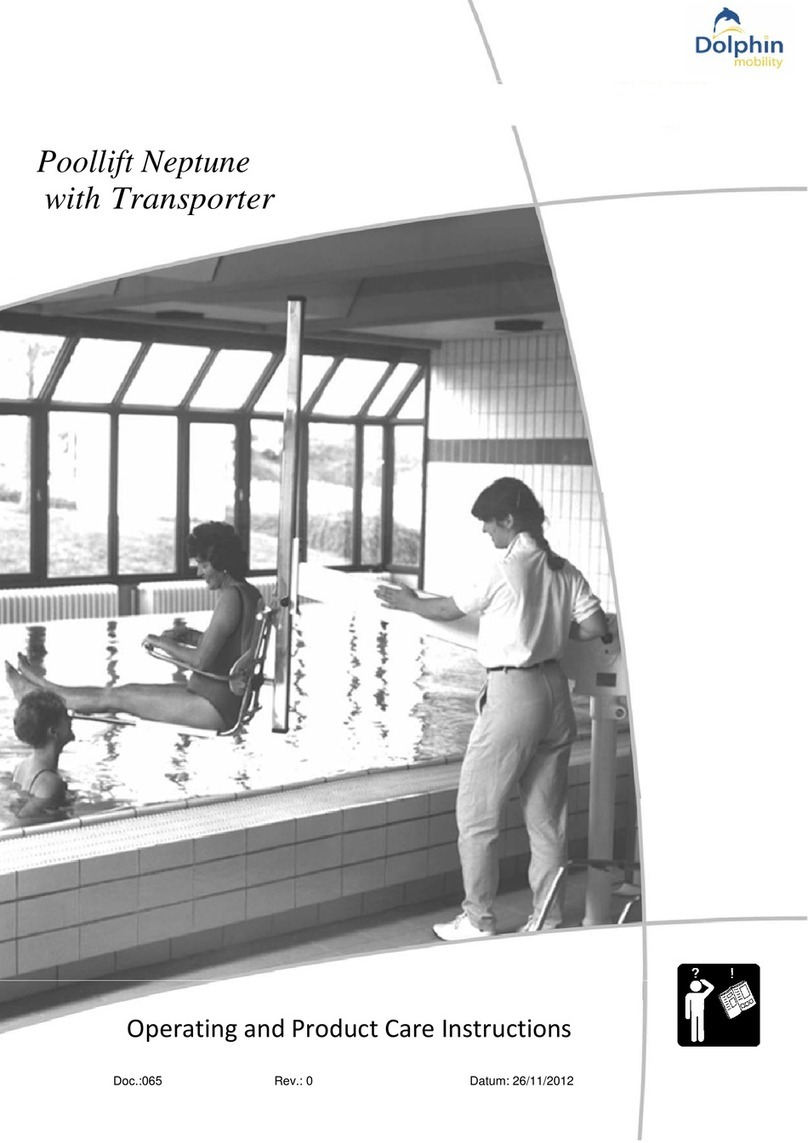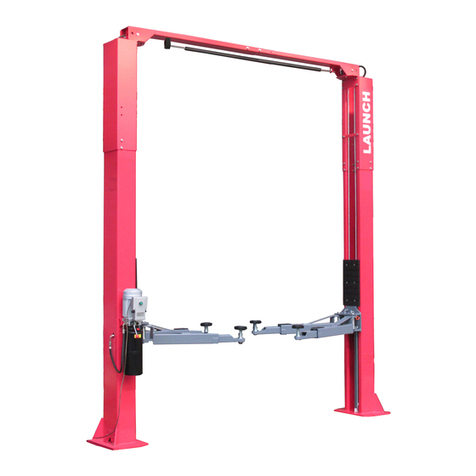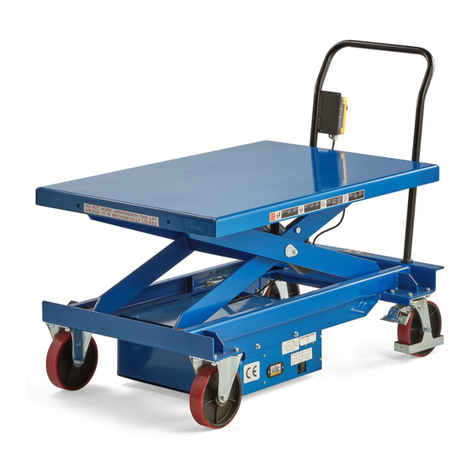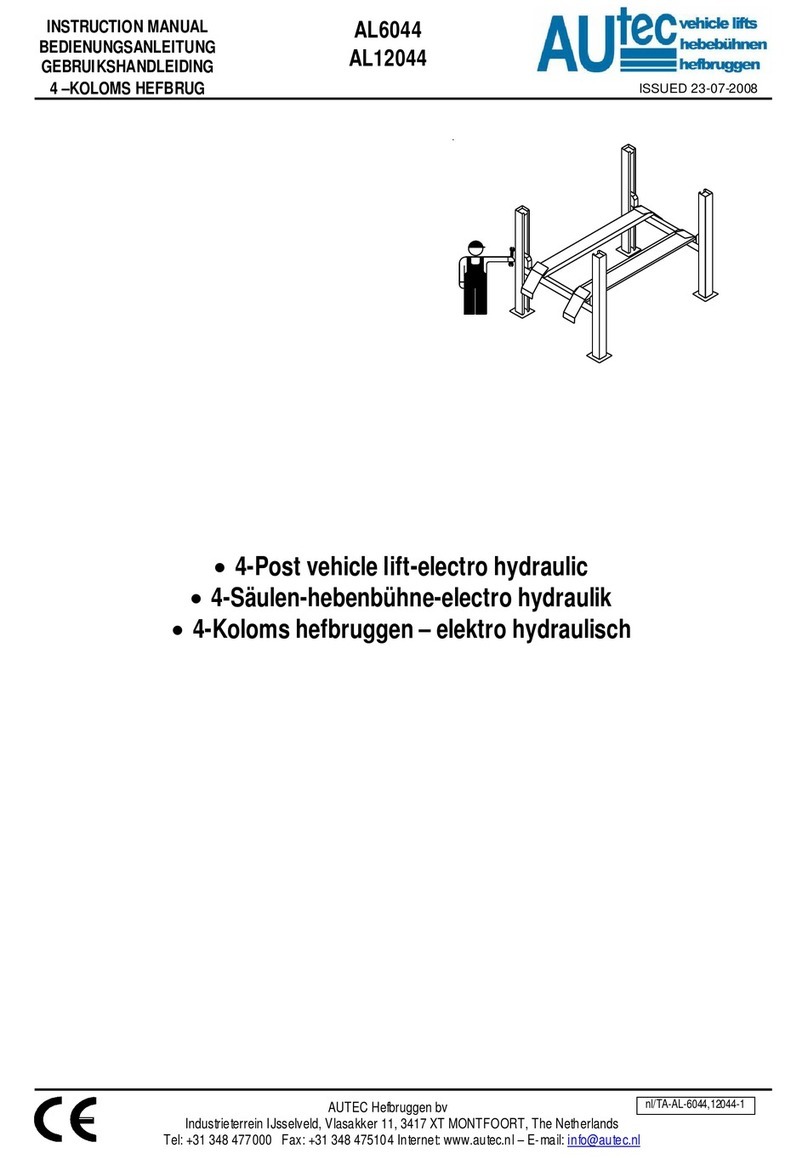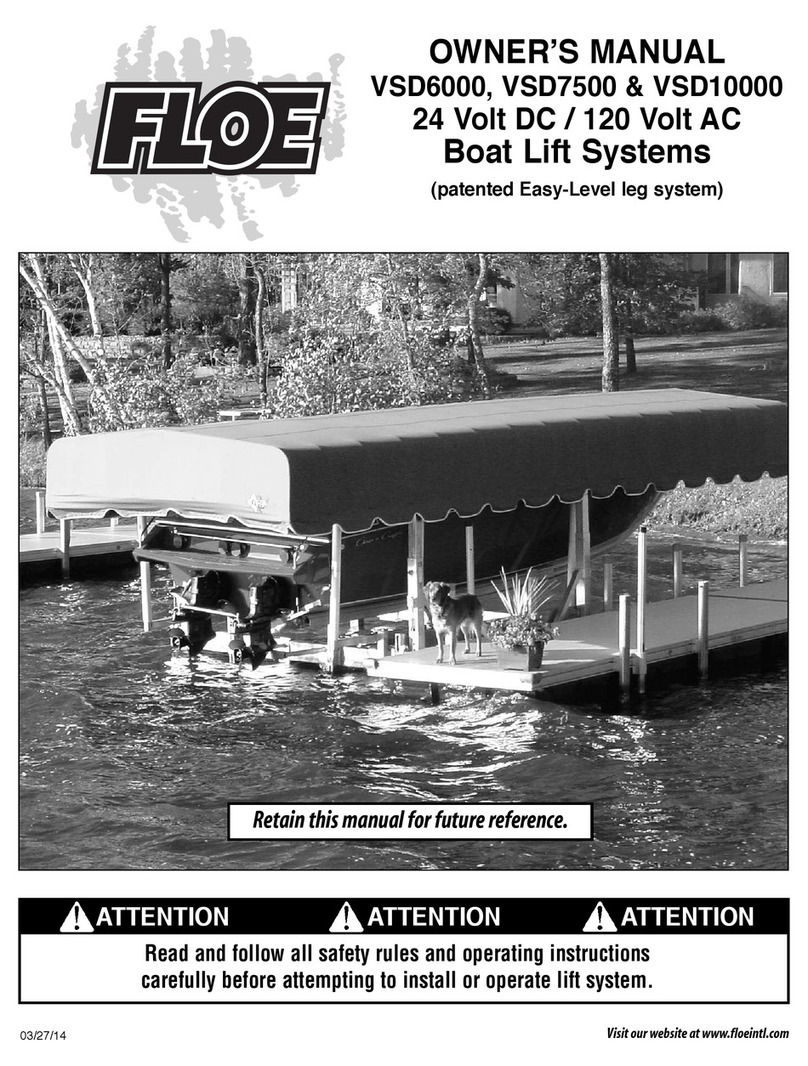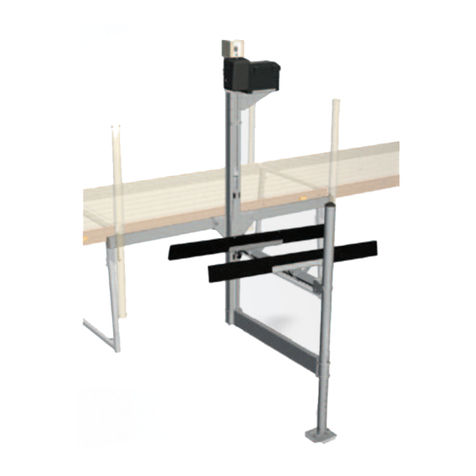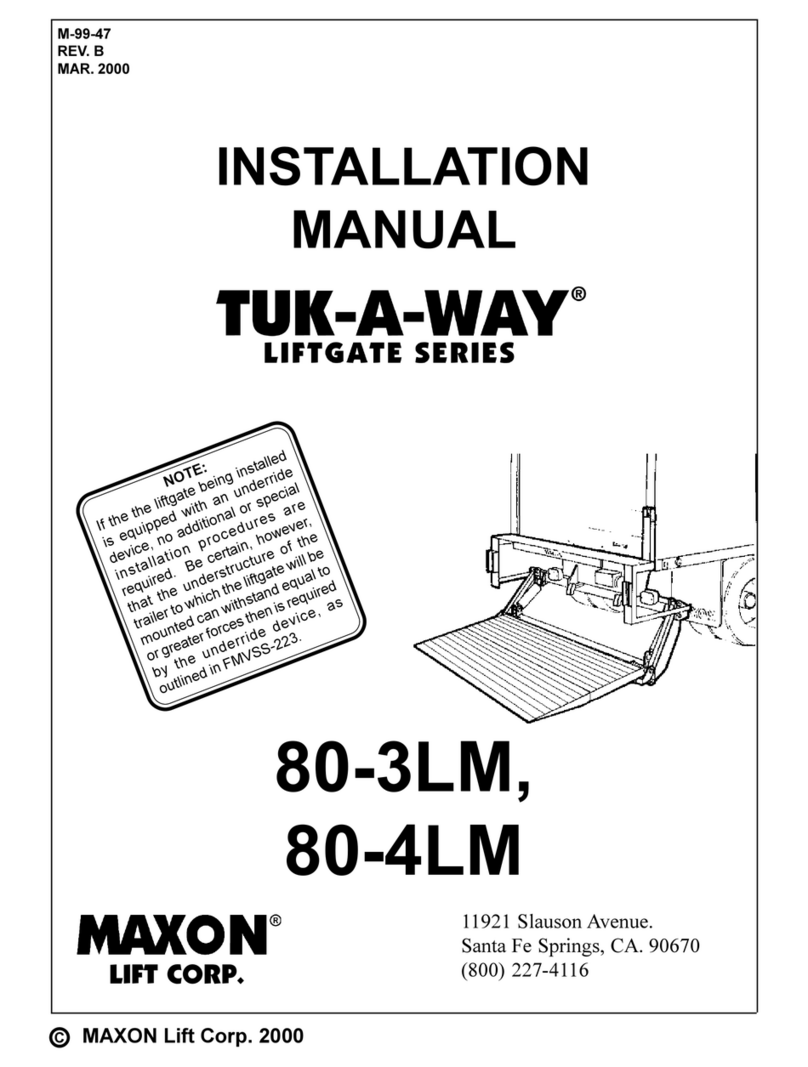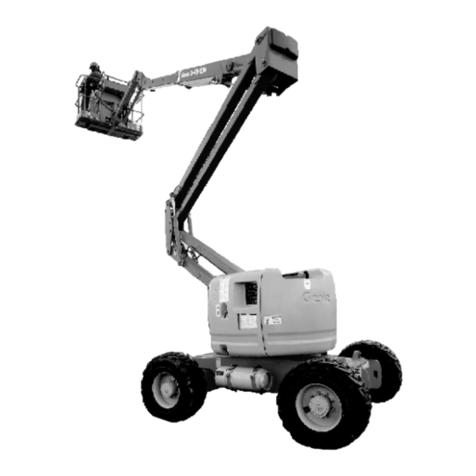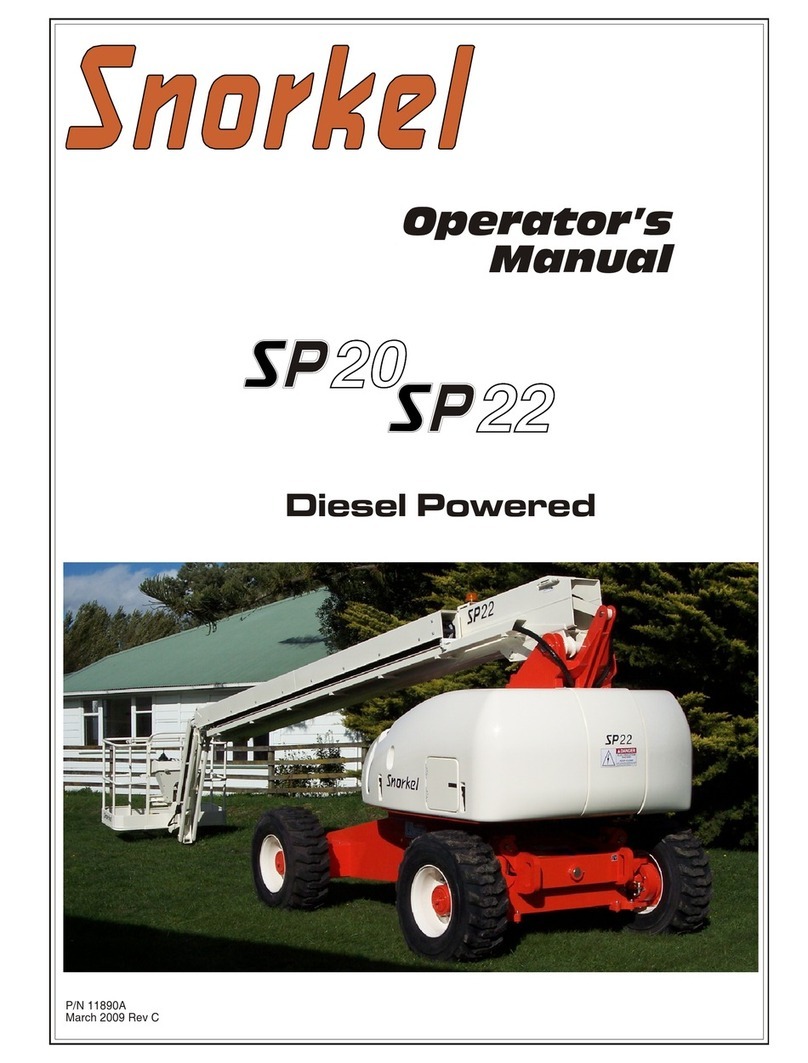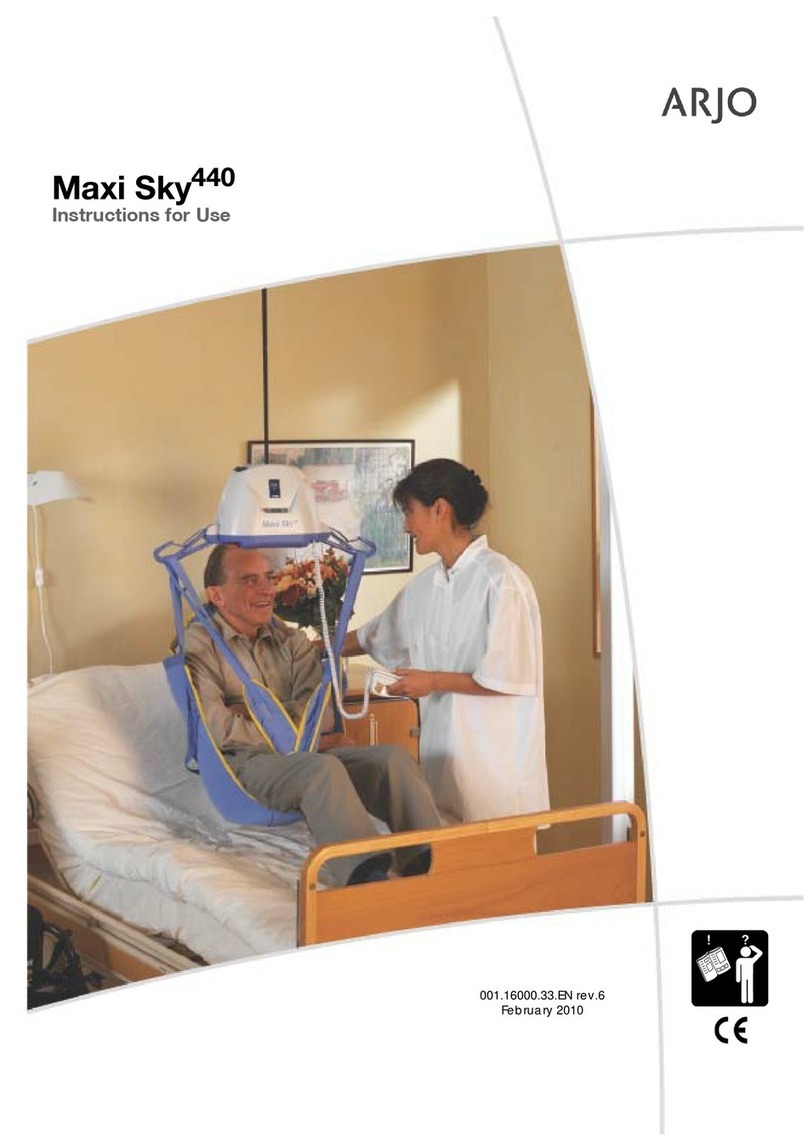WIFO HM Series Operator's manual


1
English
Table of contents
1. TO THE USER ...................................................................................................................................................................... 2
1.1 INTRODUCTION ...................................................................................................................................................................... 2
1.2 SAFETY PRECAUTIONS AND WARNINGS........................................................................................................................................ 3
1.2.1 Safety precautions .................................................................................................................................................... 3
1.2.2 Safety stickers and warning signs............................................................................................................................. 5
1.2.3 Placement of the safety stickers on the machine ..................................................................................................... 5
1.3 PURPOSE OF USE .................................................................................................................................................................... 6
1.4 LIABILITY............................................................................................................................................................................... 7
1.5 WARRANTY........................................................................................................................................................................... 7
2. TECHNICAL DATA .............................................................................................................................................................. 8
2.1 GENERAL TECHNICAL DATA ...................................................................................................................................................... 8
2.2 HM .................................................................................................................................................................................. 10
2.2.1 Parts list....................................................................................................................................................................... 10
2.3 HMD ................................................................................................................................................................................ 12
2.3.1 Parts List...................................................................................................................................................................... 12
2.3.2 Commissioning of a HM/HMD lifting mast ................................................................................................................ 14
2.4 ACCESSORIES ...................................................................................................................................................................... 15
2.4.1 Sideshift .................................................................................................................................................................. 15
2.4.2 Hydraulic connections on the cart .......................................................................................................................... 16
2.4.3 Valve block.............................................................................................................................................................. 17
2.4.4 Tilting cylinder/hydraulic top link ........................................................................................................................... 18
2.5 SPARE PARTS ....................................................................................................................................................................... 19
3. FAULTS AND MAINTENANCE ........................................................................................................................................... 20
3.1 PREVENTIVE MAINTENANCE AND LUBRICATION .......................................................................................................................... 20
3.2 TROUBLESHOOTING.............................................................................................................................................................. 21

2
1. To the user
1.1 Introduction
The aim of this manual is to inform users about the commissioning, use and maintenance of their new WIFO lifting
mast. Also included in this manual are a number of safety instructions to create a safe working environment.
At WIFO-Anema B.V. we aim to continuously improve our products. WIFO-Anema B.V. reserve the right to introduce
any changes and improvements deemed necessary without prior notice.
Please read the manual thoroughly and observe the safety procedures before putting the unit into operation.
Contact your dealer for any further questions or concerns you may have.
We trust that your WIFO lifting mast will provide many years of useful service.
Keep this manual in a safe place for future reference!
WIFO-Anema B.V.
Dealer:
ATTENTION:
Carefully read this manual before you put the machine into operation and act upon all directions that are
given. This is to guarantee its safe, trouble-free operation.

3
1.2 Safety precautions and warnings
Please read this manual before you put the machine into operation for the first time, and observe the safety
instructions at all times. The most important instructions are marked with a symbol.
Any person in charge of the commencement of operation, the operation itself or the maintenance of the machine is
urged to carefully read and observe the following instructions.
1.2.1 Safety precautions
The following safety instructions apply to all types of WIFO Lifting masts. No distinction is made with regard to the
type of lifting vehicle used.
Operate the mast only from the driver's seat of the tractor. Ensure that there is adequate visibility of the
work activities from this position.
At all times make sure that everybody is out of range of the working range from the lifting mast and never
stand under the box/pallet or lifting mast. Please be aware of falling products.
Never transport people on/with the lifting mast.
This symbol is used for all important actions that should not be carried out under any circumstances.
Carefully observe these prohibitions.
This symbol is used for all important safety instructions throughout this manual. Carefully observe the
instructions and be very cautious.

4
You can only turn off the tractor when the lifting mast is in the lowest position. Ensure that the combination
cannot make any sudden movements, if the combination is not used. If the mast is removed and set aside, it
should be the supported by the support legs. Place the machine on a firm, flat surface.
Make sure the hydraulic hoses and any power cables do not get jammed when operating the lifting mast.
Make sure that when lifting or lowering the mast it doesn’t hit the tractor.
Make sure that the operating lever for operating the cylinder (s) may not be confused with other control
levers to prevent inadvertent tilting.
For lifting operations only use proper lifting pallets and boxes.
Place the forks as wide as possible in order to get the greatest possible stability of the load.
Load the pallet or box so that the load cannot fall off unexpectedly. Distribute the load as evenly as
possible on both forks. Keep the center of gravity of the load as close to the fork carriage.
Transport objects with the load as low as possible to keep the tractor as stable as possible. Ensure that
there is sufficient pressure on all 4 wheels of the tractor, also pay attention to the moving of the center of
gravity when lifting, lowering and other activities and especially pay attention to the rough terrain and
slopes when working. If desired, use counterweights and / or twin wheel. Or set the track width of the
tractor wider.

5
1.2.2 Safety stickers and warning signs
Several safety stickers have been put onto the machine. The meaning of the stickers on this machine is as follows:
1.2.3 Placement of the safety stickers on the machine
Figure 1.2.1-Location of safety stickers for HM
1
2
Attentie:
Lees de instructies uit de handleiding goed door alvorens onderhoud te plegen aan
de machine!
Stop de motor en haal de sleutel uit het contact zolang er aan de machine
gewerkt wordt!
1
1
2
Figure 1.2.2-Location of safety stickers for HMD
A safe working environment also requires personnel to be well-informed about the various safety stickers
on the machine. Be aware of the hazards they warn you to look out for.
Replace any loose, illegible or missing stickers.
N.B.:
Please read the instruction manual prior to any maintenance to the machine.
Turn off the engine and remove the key from the ignition while maintenance
is carried out on the machine!
1
Danger:
Always keep at a safe distance from the machine!
2

6
1.3 Purpose of use
The WIFO HM/HMD lifting masts are only suitable for lifting boxes, pallets and bales (in combination with a WIFO
bale clamp). The lifting masts are available for use on a tractor with a standard cat. II three-point hitch.
Do not use the HM/HMD lifting mast for carrying people under any circumstances!
ATTENTION:
The lifting capacity of the tractor must exceed the total mass of the lifting mast, the box / pallet and its
load. The tractor must be equipped with a double action hydraulic connection on the telescopic boom.

7
1.4 Liability
Any person working with or on the machine must have read this manual. The machine is to be used for its intended
purpose only. Included in the intended purpose are, among other things:
1. Work must be carried out in accordance with the directions and within the functional restrictions (e.g.
maximum hydraulic working pressure) as outlined in the regulations. Use only sound and appropriate tools.
2. Electric/electronic equipment and accessories (e.g. cables) must be treated in accordance with the general
accepted policy for using non-waterproof portable electric and electronic equipment, such as:
a) Storing and keeping in a clean, dry environment away from rodents and the like; and
b) Protecting the equipment against severe, uncushioned shocks and water (precipitation).
3. Use only original or compatible spare parts. Such parts must be assembled as directed (e.g. by observing the
recommended tightening moments). Spare parts (as well as lubricants) are considered compatible only if
explicitly approved by WIFO or in the event that the customer is able to prove they possess the required
properties for the purpose(s) they are used.
4. Use only lubricants that meet the specifications as described in the directions.
5. Always observe the local regulations in terms of accident prevention, safety, traffic and transport.
6. Only trained personnel with knowledge of the possible hazards have permission to work with/on the
machine.
7. WIFO-Anema B.V. will assume no liability in any shape or form for losses or damage caused following
modifications to the machine, which have not been explicitly approved by WIFO.
1.5 Warranty
WIFO-Anema B.V. guarantees the soundness of its products in terms of materials used and/or structural defects.
However, in any event this warranty is limited to the free-of-charge replacement or repairs of the defect product, or
part thereof. WIFO-Anema B.V. assumes no liability for any loss or damage arising from faulty deliveries and/or the
breakdown of purchased goods before the warranty period has expired. The warranty period for this product is
twelve months.
Noncompliance with the rules and directions from this manual will be considered as serious negligence, for
the consequences of which WIFO-Anema B.V. accepts no liability whatsoever. In such cases, the user will
bear the full risk of his actions!
WIFO-Anema B.V. is continuously working on the improvement of its products. For that reason, WIFO-
Anema B.V. reserves the right to introduce any changes and improvements deemed necessary without
prior notice. However, it does not imply an obligation to make any such changes or improvements to
machines bought by customers in the past!

8
2. Technical data
2.1 General technical data
Type
HM 200/1000
HM 240/1000
HM 280/1000
Lifting height
2000 mm
2400 mm
2800 mm
Lifting capacity
1000 kg
1000 kg
1000 kg
Clearance height
1800 mm
2000 mm
2200 mm
No. of cylinders
1
1
1
No. of chains
1
1
1
Weight
370 kg
385 kg
400 kg
Table 2.1.1-Types of WIFO lifting masts with a lifting capacity up to 1000 kg
Type
HM 200/1600
HM 240/1600
HM 280/1600
Lifting height
2000 mm
2400 mm
2800 mm
Lifting capacity
1600 kg
1600 kg
1600 kg
Clearance height
1800 mm
2000 mm
2200 mm
No. of cylinders
1
1
1
No. of chains
1
1
1
Weight
380 kg
395 kg
410 kg
Table 2.1.2- Types of WIFO lifting masts with a lifting capacity up to 1600 kg
Type
HMD 200/1600
HMD 240/1600
HMD 280/1600
Lifting height
2000 mm
2400 mm
2800 mm
Lifting capacity
1600 kg
1600 kg
1600 kg
Clearance height
1800 mm
2000 mm
2200 mm
No. of cylinders
2
2
2
No. of chains
1
1
1
Weight
400 kg
425 kg
450 kg
Table 2.1.3- Types of WIFO lifting masts with a lifting capacity up to 1600 kg
Type
HMD 240/2000
HMD 280/2000
HLifting height
2400 mm
2800 mm
Lifting capacity
2000 kg
2000 kg
Clearance height
2000 mm
2200 mm
No. of cylinders
2
2
No. of chains
2
2
Weight
615 kg
635 kg
Table 2.1.4- Types of WIFO lifting masts with a lifting capacity up to 2000 kg
Type
HMD 240/2500
HMD 280/2500
HMD 340/2500
HMD 400/2500
Lifting height
2400 mm
2800 mm
3400 mm
4000 mm
Lifting capacity
2500 kg
2500 kg
2500 kg
2500 kg
Clearance height
2000 mm
2200 mm
2500 mm
2800 mm
No. of cylinders
2
2
2
2
No. of chains
2
2
2
2
Weight
625 kg
645 kg
680 kg
710 kg
Table 2.1.5- Types of WIFO lifting masts with a lifting capacity up to 2500 kg

9
The lifting capacity has been calculated at 18 mpa (180 Bar) working pressure.
The vehicle clearance height has been calculated with the drawbars 300 mm of the ground.
The weight of the lifting mast with sideshift is 27kg more.
Equipment:
-Folding and width adjustable forks
-Towbar (Maximum towing load 2000 kg horizontal, vertical 400 kg)
-FEM II fork carriage on all models >2000kg capacity.
Options:
-With/without Sideshift
-With/without hydraulic top bar/tilt Cylinder
-With/without double acting hydraulic connection on the fork carriage
-With/without valve block
-With/without FEM II fork carriage on models till 1600 kg
Operation pressure hydraulics
Max. 18 Mpa (180 Bar)
Frame width
525 mm
Fork carriage width
1020 mm
Fork length
1100 mm
Frontal extension length
(Distance from center lower hitch pin to the front of the
upright leg) 220 mm without sideshift/160 mm with sideshift
Attachment
The tractor must be equipped with a standard Category II
three-point hitch
Table 2.1.6-General data HM/HMD lifting masts

10
2.2 HM
2.2.1 Parts list
Figure 2.2.1-Exploded assembly drawing for the HM Lifting mast

11
Number
Description
1
Lower beam
2
Outer frame
3
Top beam
4
Trolley
5
Chain tightener
6
Chain roll
7
Chain roll tube
8
Support leg
9
Guiding plate
10
Inner frame
11
Cylinder tube
12
Plug bottom cylinder
13
Upright fork
14
Locking pin for the upright fork
15
Support leg pen
16
Top link pin cat. II
17
Fork carriage
18
Upright leg (1000-1600 kg)
Table 2.2.1-Parts list for the HM lifting mast

12
2.3 HMD
2.3.1 Parts List
Figure 2.3.1-Exploded assembly drawing for the HMD lifting mast

13
Number
description
1
Outer frame
2
Inner frame
3
Fork carriage
4
Drawbar pen
5
Cylinder mounting plate
6
Chain rolling as
7
Cylinder tube
8
Piston-rod DW 60-50-1400
9
Locking pin with handle
10
Support leg
11
Pen support leg
12
Guiding plate
13
Chain tightener
14
Top link pin cat. II
15
Steel chain roll
16
Upright leg
17
Upright fork
18
Locking pin fork
19
Hydraulic hose roll
20
Bush for hose roll
Table 2.3.1-Parts list for the HMD lifting mast

14
2.3.2 Commissioning of a HM/HMD lifting mast
1. Make sure that the drawbars of the three-point hitch of the tractor are at the same height. Connect the
lifting mast to the category II three-point hitch of the tractor. Use proper spring clips. Adjust the toplink in
such a way that the forks of the fork-lift mast are in a horizontal position. (See using a tilt cylinder / hydraulic
top link "accessories") The lateral movement of the mast in the linkage should be minimal. This is set with
the stabilizers of the linkage.
2. In case of a fork lift mast with a lifting height of 2 meters or more, it is a requirement by law to provide the
tractor-linkage with a blocking device in order to prevent tipping over of the fork lift mast.
3. Connect the hydraulic hoses. Make sure the hydraulic hoses are clean before connecting them to the rapid-
action couplings, to prevent any debris from entering the hydraulics of the machine.
4. Subsequently check that the hydraulic hoses can move freely and check that the system is not leaking oil.
5. Remove the support legs.
De WIFO lifting mast is now ready to be used.

15
2.4 Accessories
2.4.1 Sideshift
Purpose of use:
The lifting mast can be equipped with a sideshift to move the load from side to side. The tractor must be
equipped with an extra double action hydraulic installation or operation must be done via an extra valve
block. See also chapter 2.4.3.
Commissioning:
Tilt the fork lift mast and place the lift with the moving frame onto a level and firm surface in such a way
that the lower beam is within easy reach. Use suitable lifting equipment (minimum lifting capacity 500kg).
Loosen the cylinder bolt(s) and provide sufficient support for the cylinder. Loosen the bolts and remove the
lower beam. Fasten the ground plate for the sideshift (no. 40) with the bolts. Take care that the sideshift
cylinder ends up at the tractor side of the fork lift mast. Fasten the liftening cylinder(s) again with the
cylinder bolts and tighten them securely.
Place the lifting mast back on the tractor. Connect the hydraulic hoses. It is imperative here that the
shortcuts are clean so that no dirt enters the hydraulic system of the machine.
Manual:
Use the sideshift to keep the load as much as possible in the centre of the tractor. Take care that the
hydraulic hoses cannot become entangled. Take care that the operating handles for shifting sidewards
cannot become mutually entangled with other operating handles in order to prevent unintentional
operating.
Figure 2.4.1-Exploded assembly drawing for the sideshift

16
2.4.2 Hydraulic connections on the cart
Purpose of use:
The fork lift mast can be equipped with a hydraulic connection to the fork carriage to allow the connection of
ancillary hydraulic cylinders or hydraulic motors to the fork carriage. The tractor must be equipped with an
extra double action hydraulic installation or operation must be done via an extra valve block. See also
chapter 2.4.3.
Commissioning:
Make sure the mast and the fork carriage is in the lowest position. Loosen the chain (s) by slightly turning
the nuts on the chain tightener. Remove the bolt(s) in the hose roll and replace this (these) by M16x120
bolt(s) which fasten the hose roll and the bushes for the hose roll at the same time. Tighten securely. Place
the hoses on the roll. Mount the hydraulic connectors to the mounting plate on the fork carriage. Secure the
hoses to the forak carriage with hose clamps. Don’t tighten the hoses too tight. Connect the hoses to a
double acting hydraulic connection. It is imperative here that the shortcuts are clean so that no dirt enters
the hydraulic system of the machine.
Manual:
Take care that the hydraulic hoses cannot become entangled. Take care that the operating handles cannot
become mutually entangled with other operating handles in order to prevent unintentional operating.
Figure 2.4.2-Exploded assembly drawing for hydraulic connection on the cart

17
2.4.3 Valve block
P1/P2: On-/Of drain
T/O: Lifting cylinder
C1/C2: Tilting cylinder
C3/C4: Sideshift/hydr. connection
Purpose of use:
The lifting mast can be equipped with an additional valve block so that the additional hydraulic function can
be centrally controlled and only two hydraulic connections have to be connected or disconnected in
attaching or taking off the fork lift mast. Connect lever (No. 69) on a double working valve of the tractor.
Commissioning:
Place the valve support (No. 65) in the tube provided on the outer frame. Connect the hydraulic hoses for
the various functions to the valves in pairs. Tighten the connections and swivels securely. Connect the inlet
and outlet hoses of valve block. Connect the inlet and outlet hoses of the valve block, taking care to use the
left hose (as seen in the driving direction) of the valve block as the pressure duct. It is imperative here that
the shortcuts are clean so that no dirt enters the hydraulic system of the machine.
When using a electro-hydraulic valve the switch should be mounted in such a position that the tractor driver
can access it easily from its operating position and make sure that the handle can't be confused with any
other controls to prevent unintentional operating.
Take care of the correct voltage of the tractor. The coil (no. 68) is only suitable for 12 volt. Connect a 2-wire
cable according to the diagram, consider adding an indicator light, fuse and / or socket on the circuit. Note: if
the valve block is placed in the tractor all hydraulic hoses factory performed are one meter longer than
specified in the parts list.
Manual:
Take care that the hydraulic hoses cannot become entangled. Take care that the operating handles cannot
become mutually entangled with other operating handles in order to prevent unintentional operating.
Figure 2.4.3-Exploded assembly drawing of the Valve block

18
2.4.4 Tilting cylinder/hydraulic top link
Use of purpose:
The fork lift mast can be equipped with a tilting cylinder/hydraulic top link to facilitate leveling of the forks.
The tractor must be equipped with an extra double action hydraulic installation or operation must be done
via an extra valve block. See also chapter 2.4.3.
Commissioning:
Attach the tilting cylinder/hydraulic top link by means of the top pin and the securing clip 9x11. Connect the
hydraulic hoses. It is imperative here that the shortcuts are clean so that no dirt enters the hydraulic system
of the machine.
Manual:
Keep the load near the tractor during transportation, with the aid of the tilting cylinder/hydraulic top link.
When loading and unloading the forks keep them as flat as possible using the tilt cylinder/hydraulic top link.
Take care that while operating the fork lift mast the fork lift mast cannot touch the tractor. Take care that
the hydraulic hoses cannot become entangled. Take care that the operating handles for controlling the tilt
cylinder/hydraulic top link cannot become mutually entangled with other operating handles in order to
prevent unintentional operating.
Figure 2.4.4-Exploded assembly drawing of the tilting/lifting cylinder
topstang
This manual suits for next models
16
Table of contents
Other WIFO Lifting System manuals


